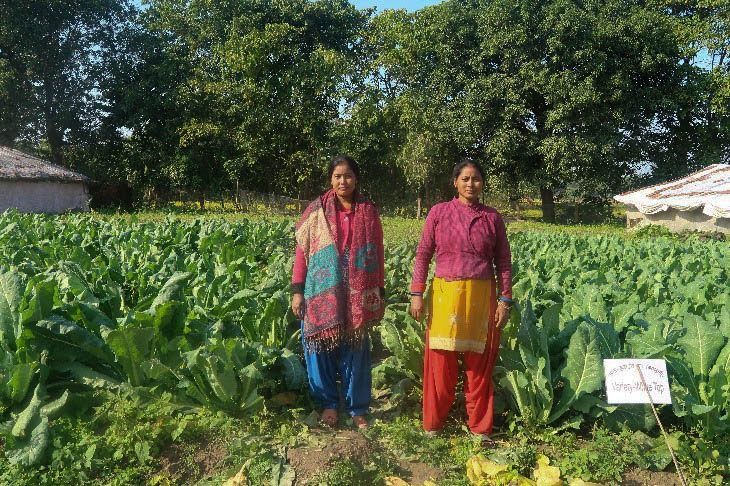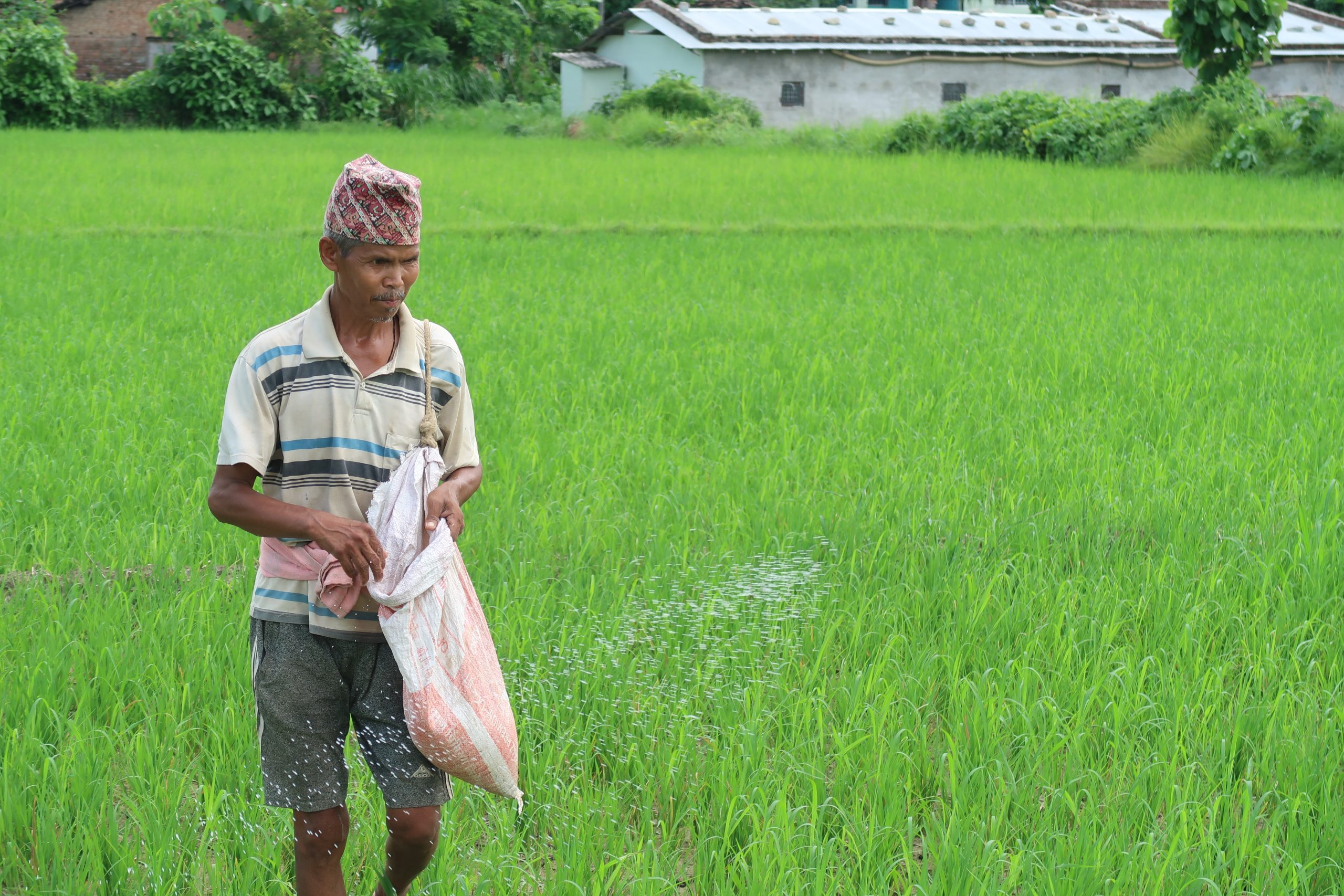
Fertilizer supply shortages are a chronic problem in Nepal, where thousands of farmers are often unable to access the required quantities on time. This is particularly common during the cultivation of rice — the major staple food crop for the country.
Some of the critical challenges to meeting fertilizer demand include limitations to import mechanisms and budget allocation for fertilizer subsidies by the Government of Nepal. Additionally, the successive COVID-19-induced lockdowns and Russia-Ukraine war have further deepened the crisis in the past two years by significantly delaying imports and increasing fertilizer prices. This continuous gap in supply has compelled farmers to buy fertilizers from the country’s unofficial or “gray” markets.
To address these shortcomings, researchers on the Nepal Seed and Fertilizer (NSAF) project, implemented by the International Maize and Wheat Improvement Center (CIMMYT), have been supporting the Fertilizer Association of Nepal (FAN) and the Ministry of Agriculture and Livestock Development (MOALD) to resolve policy issues that will enhance fertilizer distribution efficiency.

On 23 September 2022, the NSAF project team joined representatives from the International Fertilizer Development Center (IFDC) and FAN to organize a policy dialogue around improving the country’s fertilizer supply system. Held in Kathmandu, the event brought together concerned public and private sector stakeholders to discuss existing challenges and propose different policy alternatives that ensure the timely availability of fertilizers in the required quantities.
Representatives from FAN presented the key issues and challenges in the sector while NSAF project coordinator Dyutiman Choudhary presented the findings of different fertilizer policy studies conducted jointly with local partners. The results showed that involving the private sector in distribution improved farmers’ access to fertilizers compared to distribution carried out solely by cooperatives. The study also indicated a potential to reduce fertilizer subsidies and increase import volume to help meet demand.

Improving national supply systems
The event featured a panel discussion, where participants shared their experiences and outlined the issues faced by private sector importers, logistic service providers and retailers, and policymakers from federal and provincial governments while engaging in their respective functions. The panel members also suggested a number of different ways to improve national fertilizer supply systems, such as:
- Restructuring fertilizer subsidy programs, i.e. reducing the current subsidy by 20-30% (a recommendation from the NSAF assessment) and using budget savings to increase imports and allocate subsidies based on fertilizer demand.
- Making a procurement process timeline to ensure timely fertilizer supply for three major crops — rice, wheat, and maize — and importing about 30% of the total fertilizer through Government-to-Government (G2G) agreement.
- Implementing a crisis management strategy by maintaining buffer stocks (20% of the demand).
- Ensuring a level playing field for the private sector in the import and distribution of the fertilizers.
The dialogue concluded with mutual agreement by stakeholders from the public and private sectors to improve local fertilizer distribution through private sector engagement. They agreed to revise some clauses specified in the Nepal Fertilizer Distribution Directive 2020 related to profit margins, volumes, classification of fertilizer distributors and selling fertilizers. Govinda Prasad Sharma, secretary of MOALD, informed attendees that the ministry has already started planning fertilizer procurement based on actual demand and gave assurances about G2G agreements with neighboring countries such as India to bring in fertilizers for distribution during times of peak demand. Sharma also agreed to continue supporting the private sector in capacity building to import fertilizers and to revise subsidies to make more fertilizers available.
“It is our great pleasure to see all fertilizer-related stakeholders in a common platform, which is critical to bring out key issues and cooperation between the public and private sector,” said Lynn Schneider, deputy director of the Economic Growth Office at USAID Nepal. Schneider also emphasized the importance of generating efficiency in estimating fertilizer demand and supply and fertilizer types by using Nepal’s digital soil map, working in close coordination with provincial and local governments, and increasing the role of the private sector to ensure fertilizer supply to meet crop requirements in the peak season.

The Nepal Seed and Fertilizer project is supported by the United States Agency for International Development (USAID) and is a flagship project in Nepal. It aims to build competitive and synergistic seed and fertilizer systems for inclusive and sustainable growth in agricultural productivity, business development and income generation in Nepal.

 Capacity development
Capacity development 
